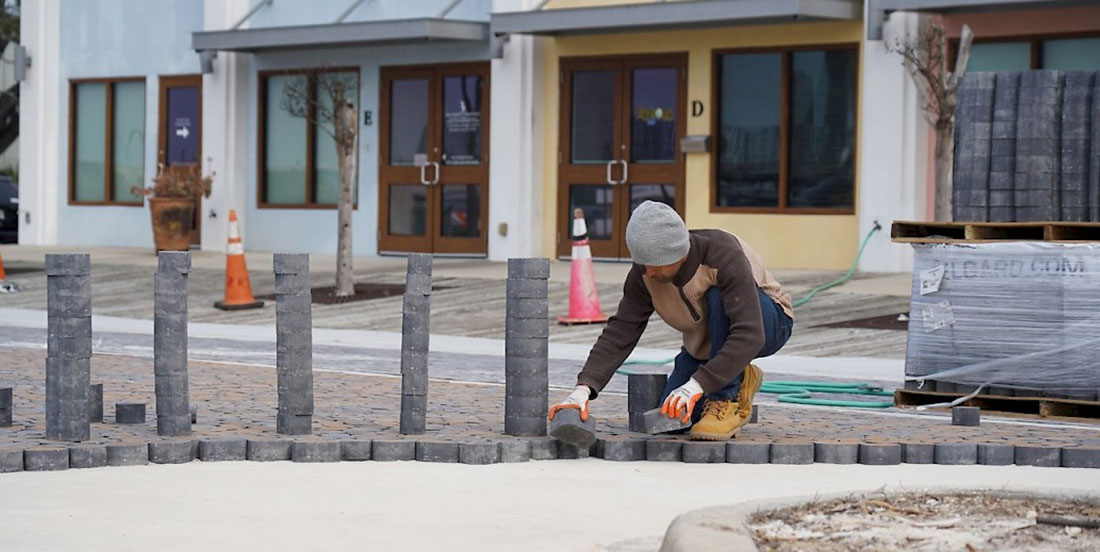There is a familiar saying among emergency planners: “Never let a crisis go to waste.” Though it seems counterintuitive to those outside the industry, planners and decision-makers understand opportunities can be found in the wake of great devastation. Even as they recognize this potential, it can be challenging to know how to plan for the future amid the work to restore critical services and repair the damage left in the crisis’s wake.
Developing a Strategic Response Plan With a Future Vision
Most emergency planners create standard detailed response and recovery plans that include steps to restore critical community lifelines, such as citizen health and safety, power, and communications – and rightly so. Disasters, especially extreme weather events such as hurricanes, earthquakes, and tornadoes, severely impact infrastructure systems like energy, potable water, and sanitary sewer services. When these are disrupted, and a community cannot function properly, there is exceptional pressure on local government to restore essential services as quickly as possible.
However, many of these strategic plans do not account for what comes after recovery. Just as emergency preparedness begins before disaster strikes, strategic response plans must also lay a foundation for regrowth and new business – even if this regrowth is expected to come years later. It is often advised to start with the end in mind. To create optimal conditions for business development post-disaster, response plans must develop a framework for strategic recovery that drives investments in infrastructure, security and safety, and quality of life to spur the shift from initial emergency response to recovery and regrowth.
Adapting strategic plans to prepare for future business development does not mean that the standard emergency response protocols are less critical.
In October 2018, Hurricane Michael struck the shores of Northwest Florida as the first Category 5 hurricane to make landfall in Florida since 1992. Ninety percent of structures were damaged in Panama City alone, and there was a complete loss of power, water, and sewer. First responders restored the bulk of these services within the first two weeks following the Category 5 storm, while the planners examined opportunities to envision the city’s future.
In the early stages of development, city planners took a critical first step and surveyed citizens about their vision for the future and what they wanted their city to become. Utilizing a process driven by input from citizens and local businesses is crucial. A visioning process built with citizen engagement helps align community goals as well as build public trust and transparent insight into how the city prepares for recovery and resiliency after a crisis. In the months immediately following Hurricane Michael, Panama City leaders conducted a community engagement campaign to shape their strategic planning. This campaign included dozens of public forums, town halls, and focus groups during which community members could share their direct feedback about the plans for the city’s future.
City planners leveraged this citizen feedback to shape the city’s strategic plan and formed an open line of communication that remains accessible to this day. Consistently connecting with citizens throughout the implementation of the recovery plan ensures continued trust and support of the community and enables the city to reprioritize as necessary.
Additionally, developing a strategic plan that both responds to disaster and aims for a future vision better enables a municipality to receive crucial funding support – namely from state and federal entities. The post-Hurricane Michael recovery plan prepared by Panama City leaders was a critical factor in securing state and federal funding that enabled the plan’s implementation. Developed in tandem with other plans for the city’s future economic and quality of life development, this strategic plan served all stakeholders involved by providing a shared vision and path forward – as well as a methodology that outlined stakeholders’ responsibilities and goals. Simply put, everyone understood where the city was headed and what they needed to do to help make this vision a reality.
Rebuilding Better Than Before
These plans were not necessarily enacted in the first week, or even a month, after the emergency event. However, establishing a framework and priorities at the outset of the response helped avoid quick fixes that would create more work later.
Business owners seek cities with quality infrastructure that will support their growth instead of impeding it. Weak infrastructure, like poor plumbing or damaged roads, can drive key customers away. In collaboration, planners, disaster management officials, and other key stakeholders should take the opportunity to restructure the city to better serve businesses and the customers who frequent them. For example, downtown streets and buildings in Panama City are being rebuilt with the future in mind – advancing long-held plans to beautify the city’s public areas and make them more efficient for citizen use. Outdated plumbing systems are being replaced with more durable, modern systems. Wide, walkable pathways, flexible transportation systems, and available parking in a downtown area allow for a better customer experience, paving the way for business growth.
Critical Considerations for Rebuilding Businesses
Other quality-of-life investments are critical factors in businesses’ decisions to set up viable businesses, including community amenities like outdoor recreation and gathering spaces, downtown dining areas, public water access, and much more. If people enjoy living in a city, they also enjoy being customers there – a critical consideration not lost on business owners.
Safety and security also rank high on the Federal Emergency Management Agency’s priority response list as a critical community lifeline. Disasters provide abundant opportunities for bad actors to take advantage of displaced citizens or abandoned homes and properties. These heightened security needs do not ebb with the tide, however. Maintaining strong security after the immediate response phase has passed encourages new business growth and development as well as the confidence of citizens in local government.
Like infrastructure upgrades, investments in newer security technology and operations are worth the upfront cost to deter criminal activity and restore trust with the community and business owners. Security measures such as partnering with businesses on camera systems and working with real-time crime center technology vastly reduce crime rates and lower police response time. These measures also improve the relationship between the business community and first responders as business owners become more involved in protecting their community and properties.
Upgrading infrastructure and security systems set the stage for new business growth after a disaster event by improving the quality of life for business owners and the community. It can be challenging for most citizens to see beyond the devastation left after a disaster. Immediate needs like food and shelter take precedence, quickly followed by the stress of “getting back to normal.” Most often, however, it is impossible to return to things as they once were. This does not have to be a bad thing, though.
In Panama City, more businesses are operating today in the downtown area than before Hurricane Michael. By taking advantage of the opportunities to create more walkways, open more parks, plant more trees, invest in safer technology and build reliable infrastructure systems, any city can build a better, brighter future that attracts new citizens and businesses for decades to come.
Even though it often takes longer and more investment upfront to put these proactive plans in motion, it pays off in the long term. Four years after Hurricane Michael, Panama City is executing its ambitious vision. Take advantage of the opportunity presented by the disaster to lay a stronger foundation for the next storm – and new growth.

Mark McQueen
Mark McQueen, major general, U.S. Army retired, is the city manager for the City of Panama City, Florida.
- Mark McQueenhttps://domprep.com/author/mark-mcqueen






